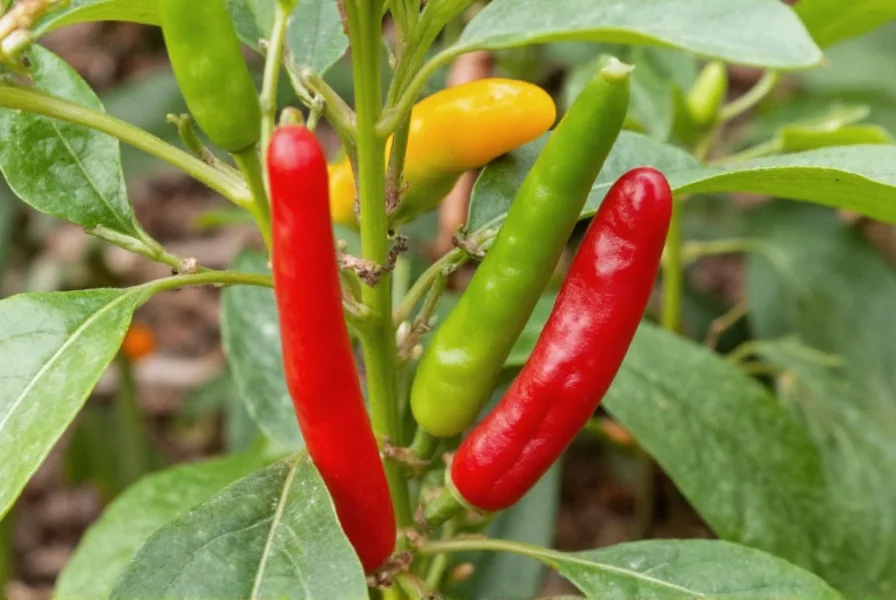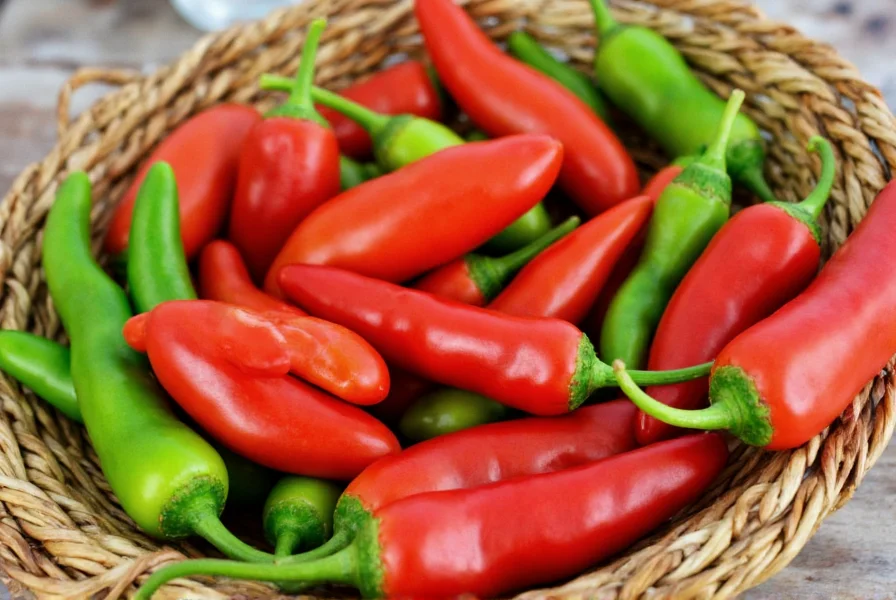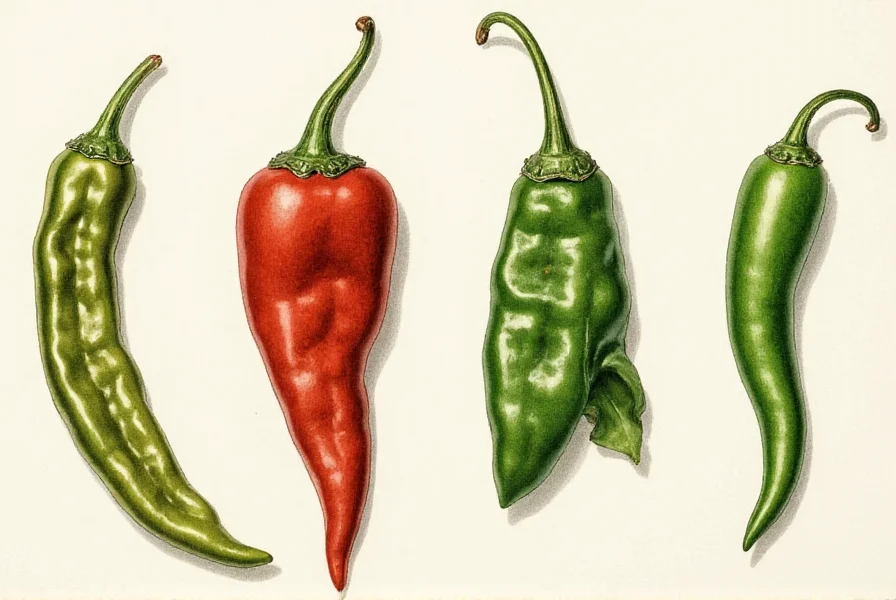Understanding wild peppers requires examining their botanical characteristics, natural habitats, and practical applications. These resilient plants have adapted to diverse environments through millions of years of evolution, developing unique traits that distinguish them from cultivated varieties.
Botanical Classification and Characteristics
Wild peppers belong to the Solanaceae family and primarily fall under five species within the Capsicum genus. The most widespread wild varieties include:
| Species | Common Name | Native Region | Scoville Range |
|---|---|---|---|
| Capsicum annuum var. glabriusculum | Chiltepin | Southwestern US, Mexico | 50,000-100,000 SHU |
| Capsicum eximium | Tree pepper | Andes Mountains | 30,000-50,000 SHU |
| Capsicum chacoense | N/A | Argentina, Paraguay | 15,000-30,000 SHU |
| Capsicum cardenasii | Aji charapita | Amazon Basin | 30,000-50,000 SHU |
Unlike cultivated peppers, wild varieties typically produce smaller fruits (often pea-sized), grow on more compact plants, and demonstrate greater resistance to pests and environmental stressors. Their seeds have evolved for natural dispersal through bird consumption, as birds don't register capsaicin heat. This evolutionary adaptation explains why wild peppers often exceed domesticated varieties in pungency.

Identification Guide for Common Wild Peppers
Proper identification of wild peppers prevents dangerous mistakes. Key characteristics to examine include:
- Fruit shape and size: Most edible wild peppers are small (3-10mm diameter), round or oval
- Color progression: Ripening from green to bright red, orange, or yellow
- Plant structure: Compact growth habit, often as shrubs rather than tall plants
- Leaf characteristics: Simple, alternate leaves with smooth margins
- Flower features: Small white or purple flowers with yellow anthers
When identifying wild peppers, always cross-reference multiple characteristics. Many toxic nightshade plants resemble edible peppers but have critical distinguishing features. For example, deadly nightshade (Atropa belladonna) produces black berries rather than the characteristic red/orange of mature wild peppers.
Safety Considerations and Toxic Look-alikes
While many wild peppers are edible, several dangerous look-alikes exist. The most critical safety guidelines include:
- Never consume any wild plant without 100% positive identification
- Avoid plants with black or purple berries (indicative of toxic nightshades)
- Steer clear of plants with milky sap (absent in true peppers)
- Be cautious with plants growing in heavily polluted areas
Edible wild peppers share specific traits that distinguish them from toxic varieties. True wild peppers have a distinctive spicy aroma when crushed, while toxic look-alikes often smell unpleasant or have no distinctive scent. The presence of white or purple flowers with yellow anthers confirms Capsicum genus membership.

Culinary Applications of Wild Peppers
Chefs and food enthusiasts value wild peppers for their complex flavor profiles that often include smoky, fruity notes alongside intense heat. The chiltepin, known as "the mother of all peppers," features prominently in traditional Mexican cuisine. When using wild peppers:
- Start with small quantities due to unpredictable heat levels
- Pair with complementary flavors like lime, cilantro, and garlic
- Consider drying methods to concentrate flavor while reducing moisture content
- Use protective gloves when handling extremely hot varieties
Wild pepper conservation efforts have gained momentum as habitat loss threatens natural populations. Sustainable harvesting practices include taking no more than 30% of available fruit from any single plant and avoiding uprooting plants. Many regions now regulate wild pepper collection to protect native populations.
Where Wild Peppers Grow Naturally
Wild peppers thrive in specific ecological niches across multiple continents. The chiltepin grows wild in the Sonoran Desert region of Arizona and Mexico, often under "nurse plants" like mesquite trees that provide partial shade. In South America, wild Capsicum species flourish in the Chaco region spanning Argentina, Paraguay, and Bolivia.
These plants typically grow in disturbed soil areas, along forest edges, or in locations with partial sunlight. Their distribution often follows bird migration patterns, as birds serve as primary seed dispersers. Climate change has begun altering traditional growing zones, with some wild pepper populations shifting to higher elevations in response to warming temperatures.
Preserving Wild Pepper Biodiversity
Genetic diversity in wild pepper populations provides crucial resilience against diseases that threaten commercial crops. Conservation initiatives focus on:
- Establishing protected habitat corridors
- Creating seed banks with genetically diverse samples
- Documenting traditional knowledge about wild pepper uses
- Supporting community-based conservation efforts
Researchers study wild peppers to identify disease-resistant traits that could benefit cultivated varieties. The genetic diversity found in wild populations represents an invaluable resource for future food security, particularly as climate challenges increase for agricultural systems worldwide.
Are all wild peppers safe to eat?
No, not all wild peppers are safe to eat. While many Capsicum species are edible, several toxic nightshade plants resemble edible peppers. Proper identification requires examining multiple characteristics including fruit color progression, flower structure, and plant morphology. When in doubt, consult a qualified botanist before consumption.
How can I identify edible wild peppers versus toxic look-alikes?
Edible wild peppers typically have small round or oval fruits that ripen from green to red/orange/yellow, white or purple flowers with yellow anthers, and a distinctive spicy aroma when crushed. Toxic look-alikes often feature black or purple berries, milky sap, unpleasant odors, and different flower structures. Always verify multiple identifying characteristics before consumption.
What's the hottest wild pepper variety commonly found?
The chiltepin (Capsicum annuum var. glabriusculum) is among the hottest commonly encountered wild peppers, measuring 50,000-100,000 Scoville Heat Units. Some rare South American varieties like Capsicum eximium can reach similar heat levels. Wild peppers often exceed their domesticated counterparts in pungency due to natural selection pressures.
Can I grow wild peppers in my garden?
Yes, many wild pepper varieties can be cultivated, though they may require specific growing conditions that mimic their natural habitat. Chiltepins, for example, need well-draining soil and partial shade. When growing wild peppers, avoid cross-pollination with domesticated varieties to preserve genetic integrity. Check local regulations as some regions restrict cultivation of certain wild species.











 浙公网安备
33010002000092号
浙公网安备
33010002000092号 浙B2-20120091-4
浙B2-20120091-4